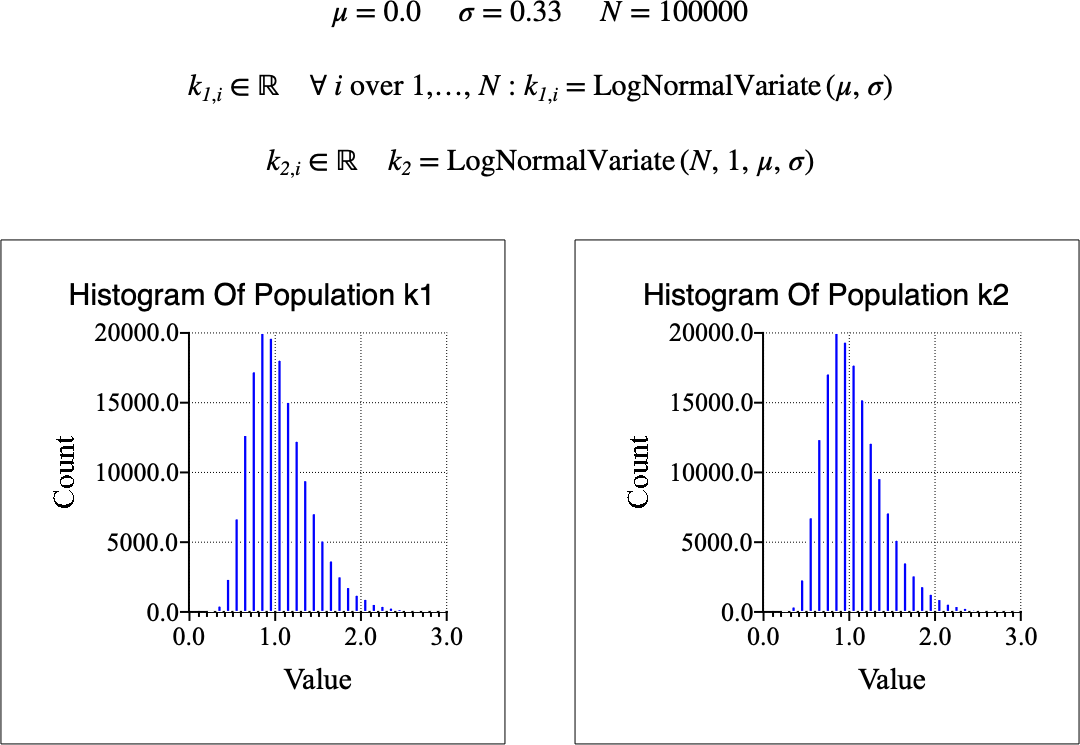\(\text{LogNormalVariate}\)¶
You can use the \(\text{LogNormalVariate}\) function to calculate one or more random variates in a log-normal distribution.
You can use the \lognormalv backslash command to insert this function.
The following variants of this function are available:
\(\text{real } \text{LogNormalVariate} \left ( \text{<}\mu\text{>} \right )\)
\(\text{real } \text{LogNormalVariate} \left ( \text{<}\mu\text{>}, \text{<}\sigma\text{>} \right )\)
\(\text{real matrix } \text{LogNormalVariate} \left ( \text{<number rows>}, \text{<number columns>}, \text{<}\mu\text{>} \right )\)
\(\text{real matrix } \text{LogNormalVariate} \left ( \text{<number rows>}, \text{<number columns>}, \text{<}\mu\text{>}, \text{<}\sigma\text{>} \right )\)
Where \(x\), \(\mu\), and \(\sigma\) are scalar values
representing the value of interest, the mean value and the standard deviation.
If not specified, the mean value will be 0 and the standard deviation will be
1. Note that this function is defined over the range \(x > 0\) and
\(\sigma > 0\). The \(\text{LogNormalVariate}\) function will generate
a runtime error or return NaN or a matrix of NaN for values for which
the function is not defined.
The one and two parameter versions of the \(\text{LogNormalVariate}\) function will return a single random variate in a log normal distribution. The three and four parameter versions of the \(\text{LogNormalVariate}\) function will return a real matrix of random variates in a log normal distribution. The \(\text{<number rows>}\) and \(\text{<number columns>}\) specify the size of the desired matrix.
The \(\text{LogNormalVariate}\) uses Marsaglia’s polar method [5] to calculate random variates in a normal distribution. The \(\text{LogNormalVariate}\) function then simply calculates \(e ^ x\) for each term. The matrix version of the \(\text{LogNormalVariate}\) function has been optimized to rapidly produce a large number of simultaneous normal random variates and SIMD instructions are used to calculate \(e ^ x\) on multiple terms simultaneously.
Figure 177 shows the basic use of the \(\text{LogNormalVariate}\) function.

Figure 177 Example Use Of The LogNormalVariate Function¶
